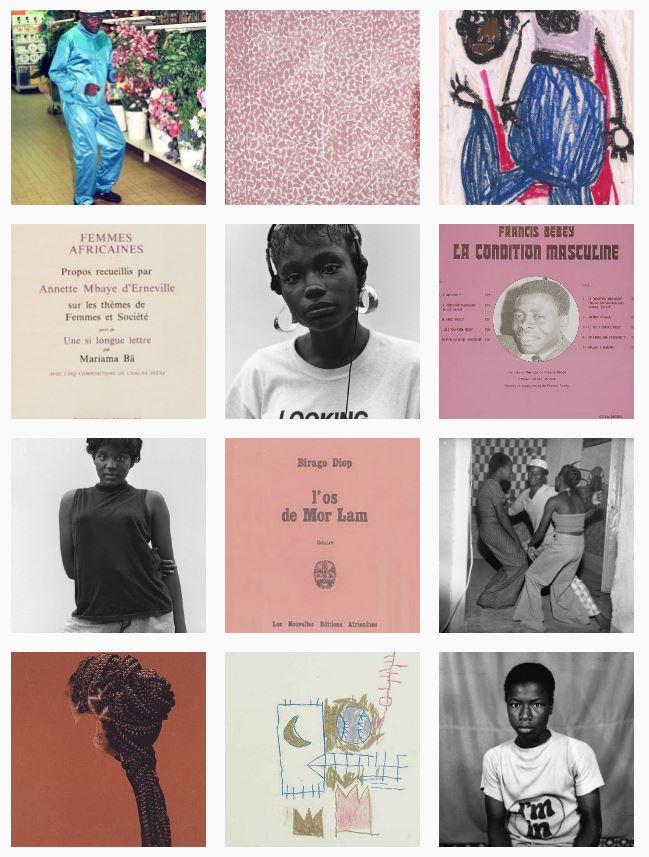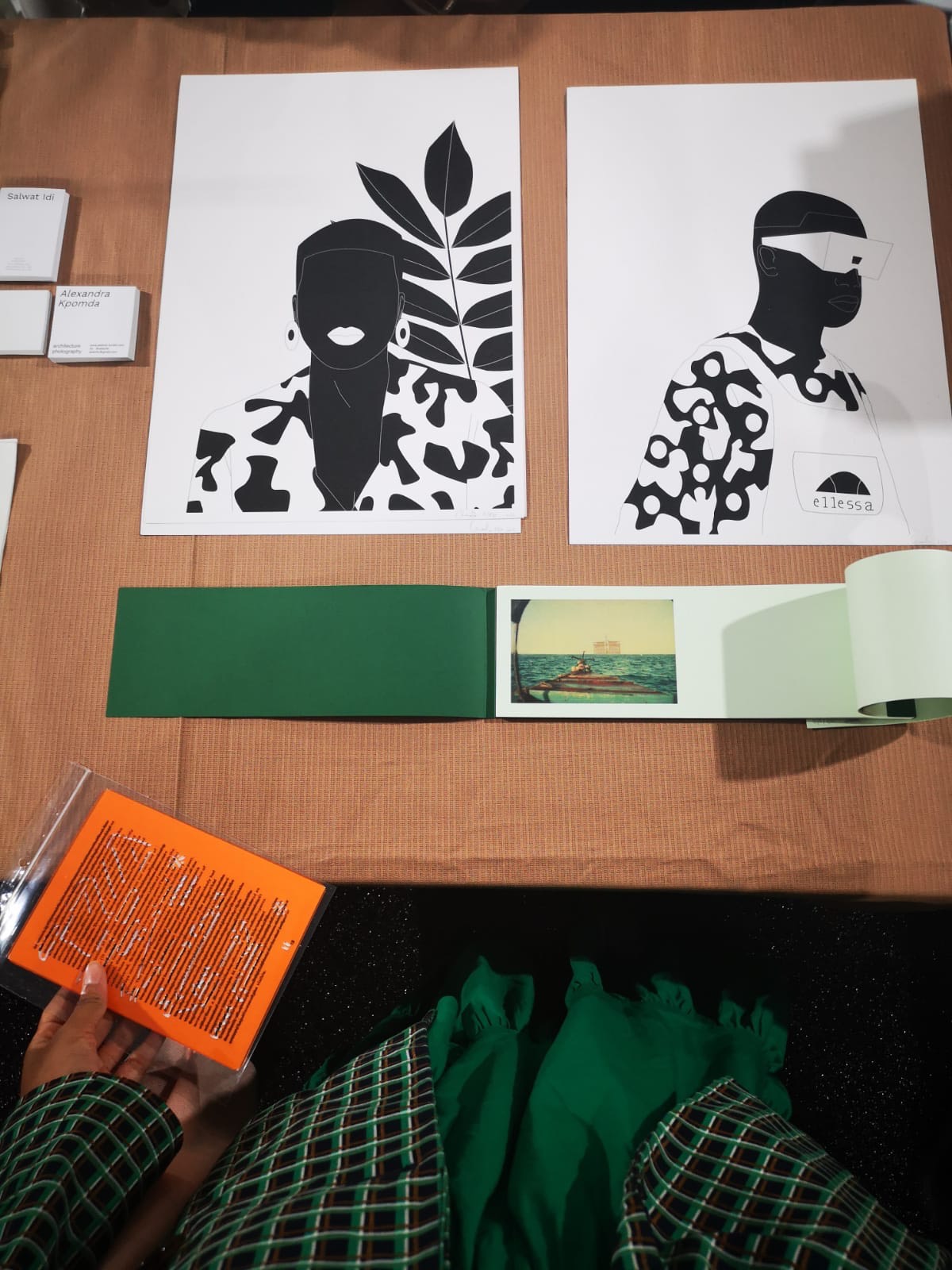Manufactoriel is a research proposition in African and Black contemporary visual culture, art and style. The textual and visual allowances of the internet have contributed to the expansion of the project, and have also been sites of critical investigation. Beginning on Tumblr, the platform has transitioned to its own domain, demonstrating their desire to independently populate the internet with intellectual and visual work by people of colour. Manufactoriel exemplifies the importance of knowledge sharing, community building and celebratory acknowledgement.
Collaboration plays a key role in their approach to sharing and communication, often working with individuals and institutions who align with and push their practice. By posing questions, as well as discharging their creative and critical inclination through different mediums and formats, Manufactoriel is building a movement that can manifest in URL and IRL. Their work flows through physical and digital spaces, foregrounding the currents that electrify Africa and the diaspora.
Founded by visual curator and visual essayist Tounzi about a decade ago when thinking about personal questions related to her presence in her own context, and in the world – questions related to Blackness, African cosmologies, African philosophies and the politics of representation. The visual was a source of information and a space to work through these questions for herself, inspiring the beginning of Manufactoriel all those years ago.

In addition to the above-mentioned work, Manufactoriel has grown to have Cahiers Manufactoriel, an independent space for a publication addressing themes related to archiving, visual culture, physical publishing and the connection between these.
I caught up with Tounzi to find out more about the inception and evolution of Manufactoriel:
Could you please share how the name ‘Manufactoriel’ was chosen?
It comes from nowhere. Because in French it has no meaning. As you read it you can hear the roots “manufacture” which in French means making with hands. When I thought about a name for this Tumblr, I first thought about the words hands (‘main’ in French), Factorial (plusieurs facteurs, infini), fact (dans les faits , la réalité) and creativity. I wanted to [name it] what creativity is to me: something infinite maybe beautiful and which by our hands we could express it concretely. Something material and that is useful. Now, I don’t know why precisely I choose to [call it] that. But I felt it was the [right] name. At that time, I was [doing] research on African culture with the urge to read texts and to see visual[ly]. This subject has always been a part of my perspective I’d like to research or discuss.

In a nutshell, you describe Manufactoriel as “a research proposition in African & Black contemporary visual culture, art, and style.” Could you please unpack this further? Why did you decide to frame it as a ‘research proposition’? And why specifically linking visual culture, art and style?
When I started the Tumblr, there were online three videos of Ahmadou Hampathé Bâ who was interviewed by a French white man and he was talking about his work as a griot [a West African storyteller, praise singer, poet or musician who shares oral knowledge, often viewed as a leader and/or advisor]. [He also spoke about his work as] a writer and encouraging the youth from the continent and its diaspora in collecting videos and audios and texts, photographs everything that could ground African culture and history which at that moment was in transition between oral transmission and writing transmission.
So with the internet era, I thought that was a space where I could start my own research. I start in the library opening books that I was shy to read. Watch[ing] films and start[ed] buying my own books and postal cards with photographs. I continued my little vinyl collection, etc. and post it on Tumblr. Then, most of the time it was from the internet and Google image.
Later I subtitled it research proposition, because for me the most important after the word research is “proposition“. Proposition because of the humility. It’s also about opening a dialogue. It’s also about showing and for it acceptation that it is not perfect and still in making. Something in movement. Proposition, as it is one among many doing this documenting process.
I was reacting over some white men and Africanists who were writings books and books on African art, culture, and history telling us what the truth is. Also because of the cultural appropriation, and the lack of visual representation, and the misrepresentation of African thinkers, creatives, artists, [science], etc…
I was really tired of these stereotypes on African people.

How has the platform evolved over the years?
Manufactoriel exists online but is also involved in print and independent publishing.
Please unpack the relationship between these two aspects, and the decision to be connected to both?
I just materialized [a] few ideas I had and that matured during this time. It’s evolved from its form; the Tumblr is now a website. [It has also evolved] from the content of it. I have also evolved my perception on Manufactoriel, as I’m a woman today. Connecting this virtual space to something more concrete and material, it’s for us being a part of a creative process and thus in a more assertive way.
Who do you see as your audience?
First creatives, artists, writers, students, curious with innovative-thoughts, from Africa and its diaspora.
Mainly people who, like me, are searching for projects and materials on African and Black visual culture, art and style.
What is Manufactoriel working on at the moment?
We are now preparing our participation in Le Salon du Livre d’Art des Afriques at the cultural space La Colonie, in Paris. The fair is run by African Art Book Fair whom we participated [with during the] Biennale [in] Dakar, lately in May. In two weeks, we will exhibit the first artist’s books by Neals Niat, Salwat Idi and Alexandra Kpomda who are also collaborators on Cahiers Manufactoriel. I’m working on a print project.





















































